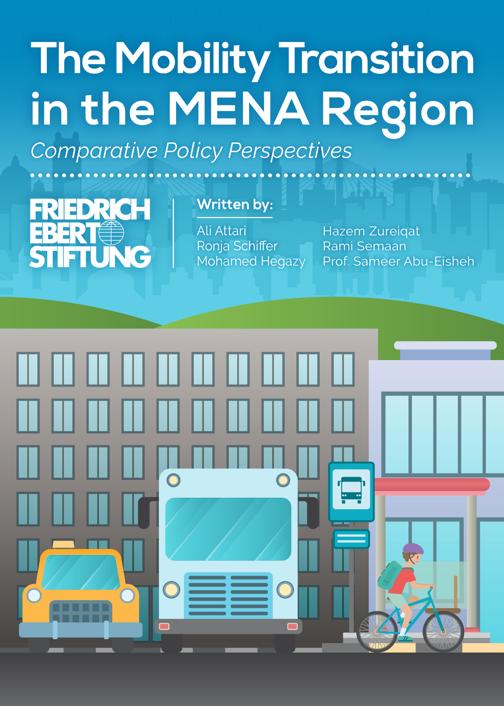Publikationen der StiftungThe mobility transition in the MENA region Titel
Titelaufnahme
- TitelThe mobility transition in the MENA region : comparative policy perspectives
- Verfasser
- Körperschaft
- Erschienen
- Parallele Sprachausgabe
- Umfang58 Seiten : Illustrationen, Diagramme, Karten
- AnmerkungLiteraturangaben
- SpracheEnglisch
- DokumenttypDruckschrift
- Schlagwörter (LOCAL)
- Schlagwörter
- Geografika
- URN
- Das Dokument ist frei verfügbar
- Nachweis
- Archiv
As the state of mobility is looking rather dim, envisioning a future in which the mobility transition enables safe, sustainable, and just mobility within the MENA region and beyond, it must include improving current policies and strategic plans. While there are country specific differences, key elements of the vision include a balanced and integrated multimodal mobility system, inclusion of active transportation modes, focusing on formalizing and extending safe and accessible public transportation, as well as decreasing the focus on private vehicles and participatory decision making processes. Mobility should become a basic right, such as education, which the state needs to provide. Different operational models need to be established in order to provide mobility as a service, as with a functioning transportation system, the economy is strengthened, and wealth can distribute itself to more parts of society.
The analysis of the current situation, governance and strategic assessment highlight the lack of comprehensive, sustainable, and just mobility planning. Looking at where we are now, there are many issues in the current status of mobility. There is a heavy focus on private vehicles (e.g. Jordan), informal public transportation (e.g. Egypt and Lebanon) and taxis (e.g Lebanon) as the main forms of transportation, and a lack of safe and accessible walking and cycling infrastructure (all four cases) reduce mobility for most of the citizens in the country, in particular vulnerable groups such as women and youth. Furthermore, current legislation and governance often has overlapping laws/government bodies, creating legal overlaps, conflict of parties involved and a lack of transparency and ineffective decision-making processes (e.g. Egypt, Lebanon, Jordan). In the case of Palestine, the fragmentation of land, the administrative division in the West bank and control of general movement by the Israeli government exacerbates their transport problems. Furthermore, there is a lack of infrastructure and awareness for active modes of transportation such as walking and cycling - lack of sidewalks (e.g. Jordan), low air quality and high congestion (e.g. Egypt) and lack of safety (e.g. Lebanon). Even in states with higher modal shares on �public transport� (e.g. Palestine and Egypt), oftentimes this includes taxis (e.g. Lebanon), and are mostly comprised of captive riders, having no alternative than to choose this particular mode of transport due to costs, accessibility, etc.
